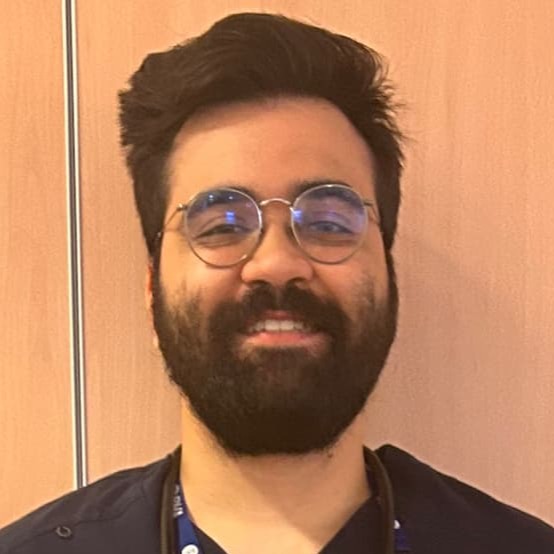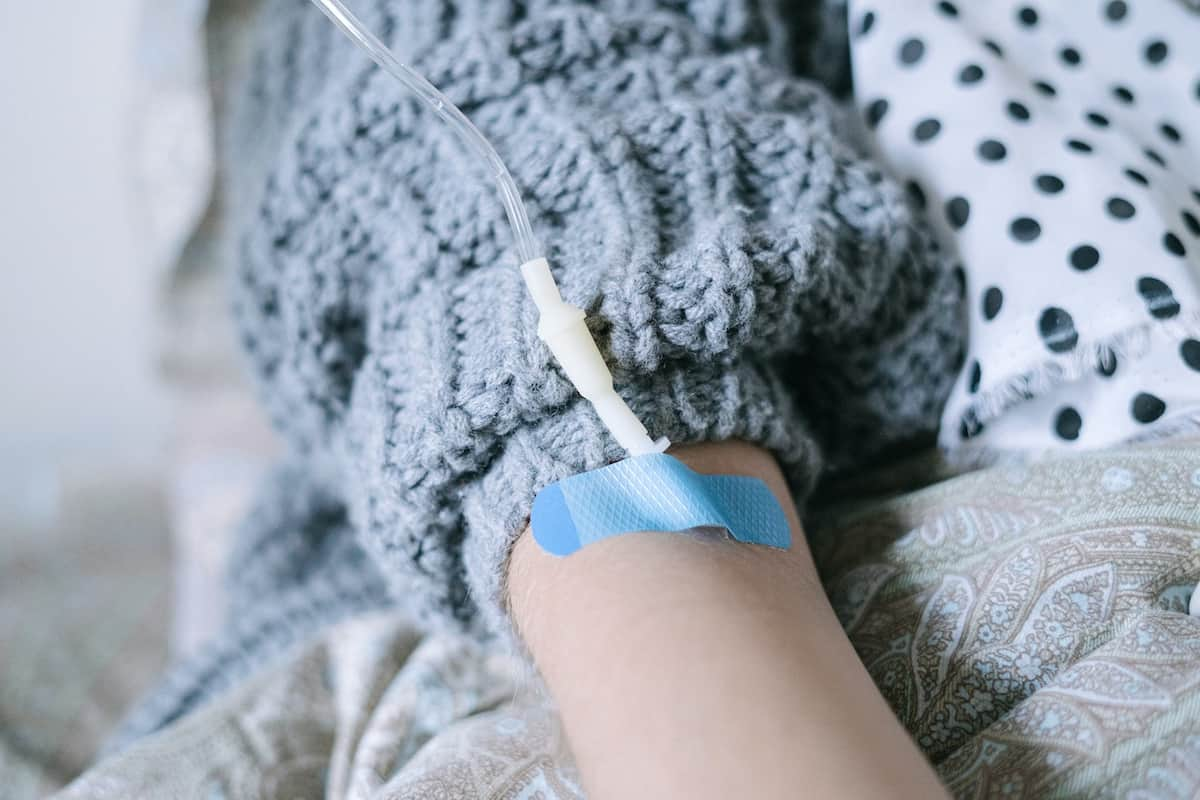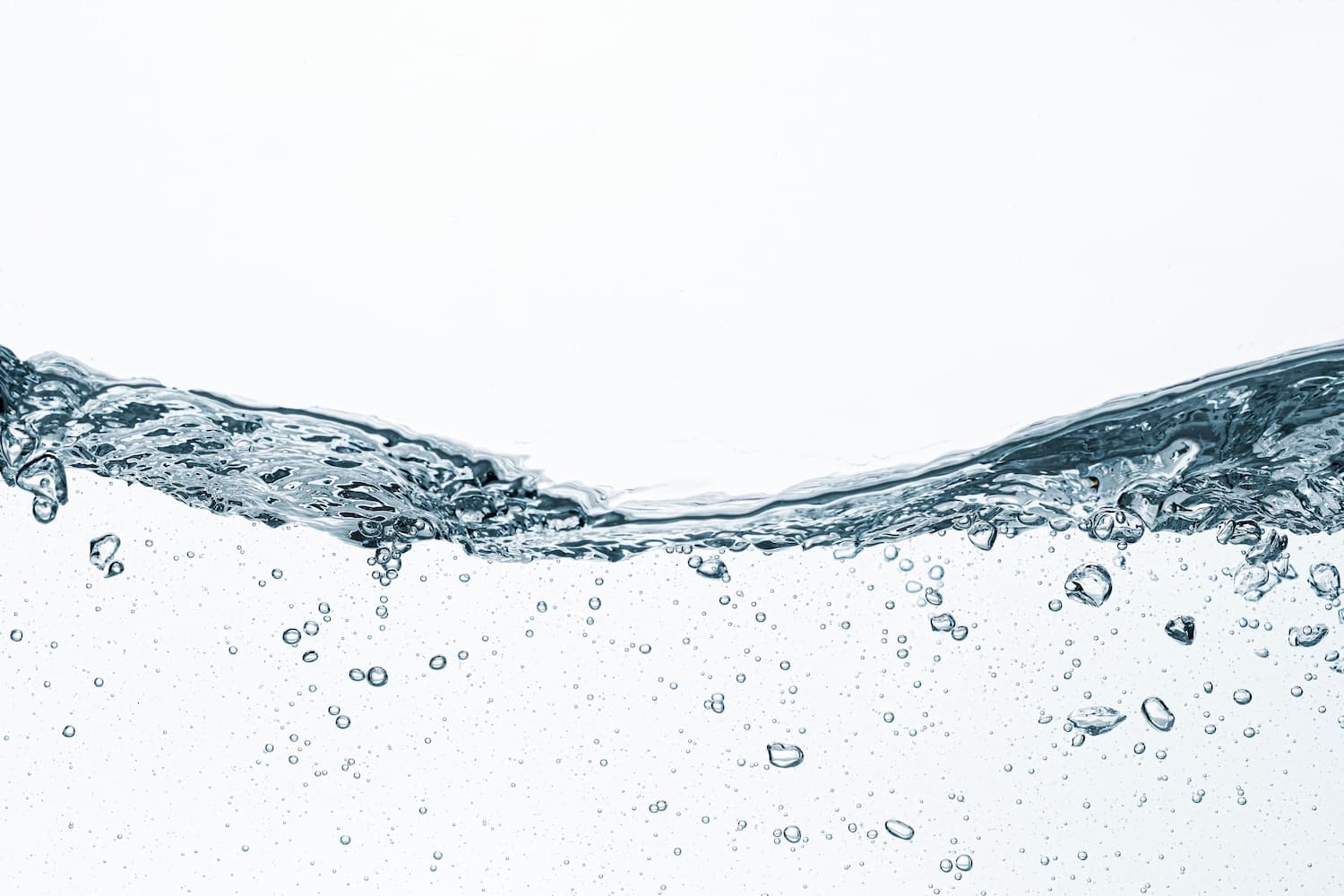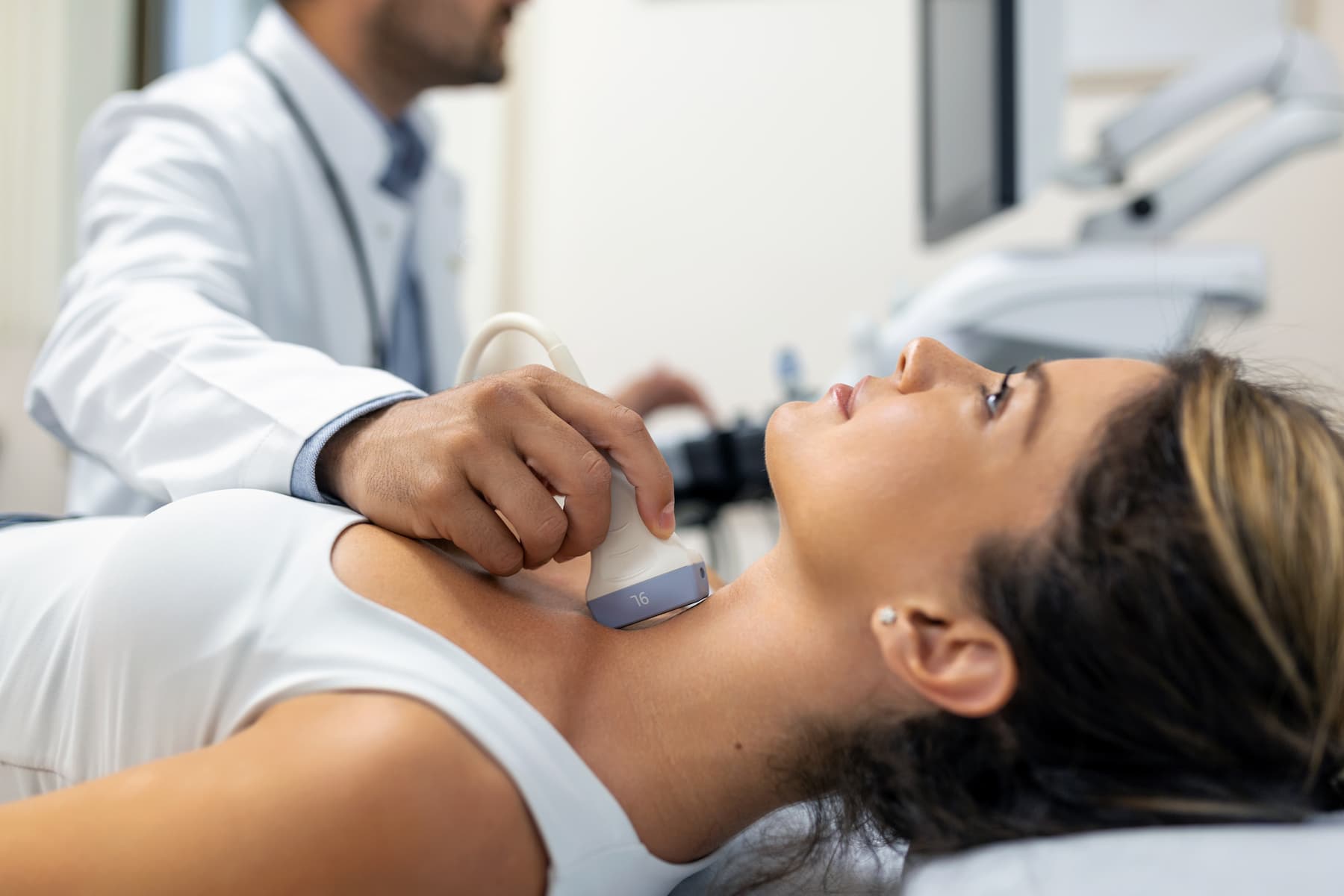World Cancer Day 2025 - how to take care of yourself?
World Cancer Day encourages research and healthy lifestyles.


Learn more about our editorial process
.

Learn more about our editorial process
.

Learn more about our editorial process
.

Learn more about our editorial process
.
Why you can trust us
Articles on Natu.Care are written based on scientific research, data from government websites and other reliable sources. The texts are written in cooperation with doctors, nutritionists and other health and beauty experts. Articles are reviewed before publication and during significant updates.
.Learn more about our editorial process
.Information about advertisements
Content on Natu.Care may contain links to products from the sale of which we may receive a commission. When creating content, we adhere to high editorial standards and take care to be objective about the products discussed. The presence of affiliate links is not dictated by our partners, and we select the products we review ourselves completely independently.
.Learn more about our terms and Conditions
.The cause of 25% of deaths in Poland is cancer. More than 1 000 000 Poles are living with cancer. There are 440 cancer diagnoses for every 100 000 people. This is frightening, but fortunately some cancers are preventable. The key is proper prevention.
.This is why World Cancer Day is celebrated on 4 February, which encourages people to take care of themselves and also raises awareness of how dangerous cancer can be. Together with the doctor, Kacper Nihalani, we will introduce you to the event, as well as answer the most common questions about cancer.
From this article you will learn:
- What 'cancer' really is.
- What is cancer?
- How many people suffer from cancer in Poland.
- How many people suffer from cancer.
- What is effective cancer prevention.
- What are the causes of cancer?
- What are the causes and symptoms of the most common cancers. .
- What is the diagnosis, treatment and prognosis of a person with cancer. .
- Where to look for support after diagnosis and how to help loved ones. .
What is World Cancer Day and when does it fall?
World Cancer Day is a global initiative that takes place every year on 4 February. It was initiated in 2000 in Paris by the Union for International Cancer Control (UICC) and the World Health Organization (WHO)and.
The event aims to highlight the importance of taking action to prevent, detect and treat cancer at a global level. The aim of the day is therefore to raise awareness of the disease and mobilise the public to fight the pandemic cancer.
Beyond this, World Cancer Day includes promoting research, ensuring access to healthcare for all, and taking action to reduce cancer mortality and improve the quality of life of cancer patients.
What is the theme for World Cancer Day in 2024.
.The campaign theme for 2022-2024 is 'Closing the Care Gap' ( Closing the Care Gap). It refers to the need to ensure equal access to healthcare for all patients, regardless of their financial situation, location, age or other factorsand.
In contrast, the theme for World Cancer Day 2024 is 'Uniting our voices and taking action' ( Uniting our voices and taking action). It signifies that the emphasis this year will be on joining forces and acting together - at both the individual and institutional levels.
Communities around the world should therefore join together to raise awareness of cancer issues, and take concrete action to improve cancer care.
How many people are affected by cancer?
.The British Cancer Research Organisation suggests that there are more than 200 types of cancer. However, it is only a few types that take the greatest toll. What were the most common types of cancer in 2020 according to data from World Cancer Research?
.|
Cancer type . |
Number of new cases in 2020and |
|
Breast cancer |
2,261,419 |
|
Lung cancer |
2,206,771 |
|
Cancer of the large intestine (rectum and colon) | |
| . |
1,931,590 |
|
Prostate cancer |
1,414,259 |
|
Gastric cancer |
1,089,103 |
|
Hepatic cancer |
905,677 |
|
Cervical cancer |
604 127 |
|
Oesophageal cancer |
603 100 |
|
Thyroid cancer |
586,202 |
|
Bladder cancer |
573 278 |
In men, the most common cancer was lung cancer (1,435,943). And in women, breast cancer (2 261 419)and.
Cancer or cancer - how is it said correctly?
.The terms 'cancer' and 'neoplasm' are often used interchangeably, but have slightly different meanings in a medical context.
Cancer is a general term for any tumour that arises from uncontrolled cell growth. Tumours can be benign, meaning that they do not spread to other parts of the body, or malignant, which can travel to other parts of the body to form metastasesand.
.On the other hand, 'cancer' is a term for a specific category of malignant tumours that originate in epithelial cells - the tissue that lines the organs and body cavities, such as the skin or mucous membranes .
.In practice, however, especially in everyday language, the term 'cancer' is commonly used to describe all types of malignant tumours.
Is every cancer fatal?
.No, not every cancer is fatal. Cancers are divided into mild and malignant.
Mild tumours are usually not life-threatening. They also do not spread to other parts of the body. Even if they cause health problems due to their location or size, they can usually be completely removed surgicallyand.
Malignant tumours (often referred to as cancer) can be fatal. It is not uncommon for them to metastasise to other organs, with which they slowly destroy the body. Despite this, many malignant tumours are curable. The exact prognosis depends on a number of factors, including the type of cancer, the stage at which it is detected, the patient's overall health and the availability and effectiveness of treatmentand.
How many people in Poland have cancer?
.Medicine is developing at a very fast pace. This might suggest that the number of people dying from cancer is decreasing. Nothing could be further from the truth. Over the past 50-60 years, both the number of cancer cases and deaths in Poland has increased by a factor of 2.5. Actually, on an annual basis, the former is around 170,000and.

The main reason for the above figures is the drastic change in medicine over the last decades. Until 100 years ago, people died mainly from infections and therefore lived too short a life to get cancer at all. Today, people live very long lives and infections are not the main cause of death. Consequently, more and more infections and deaths are cancer..
 .
.
Kacper Nihalani doctor
The number of cases in men is similar to cancer diagnoses in women (around 85,000 each). However, in terms of deaths alone, men outnumber women by 9 000 (55 000 to 46 000 in women)and.
There are several reasons for this too. First of all, women are more likely to go to the doctor - a gynaecologist, for example. Men go less often for examinations, the reason for which is mainly stereotyping. This results in cancers being diagnosed only at an advanced stage, which translates into higher mortality rates in the statistics..
 .
.
Kacper Nihalani doctor
At what age do Poles develop cancer?
.Women most commonly develop cancer between the ages of 50 and 74. In contrast, the age group for men is 55-79. Interestingly, however, in those aged 20-59 it is the female incidence rate that is higher. In contrast, most cancer deaths affect seniors in their seventh decade of lifeand.
Which cancers are the most common Polish people affected by cancer?
.For several years, mortality women has been highest for lung malignancies. Despite this, more than twice as many breast cancers are diagnosed as lung cancers. How is this possible?"
The reason is the number of cancers with a poor prognosis. It is breast cancer (in terms of mortality) that is far more dangerous.
There is no shortage of social initiatives to get examined regularly. There is a lot of solidarity among women, so there are also many online groups where women with breast cancer can share their experiences. The result is a lot of diagnoses and better prognoses..
 .
.
Kacper Nihalani doctor
Other than preventive X-rays - once every one or two years - or advertising against cigarettes, there is not as much pressure in society to monitor lung cancer. Therefore, the diagnosis is usually made later, which is associated with a worse prognosis. If there was the same approach to lung cancer as to breast cancer, the statistics would probably look different - adds doctor.
Since 2016, prostate cancer is the most frequently diagnosed cancer in men in Poland (as in other European countries) (around 20%). On the other hand, lung cancerand.
is in second place (as in women).
It is also worth mentioning colorectal cancer. It ranks 2-3 in terms of incidence and death - in both men and women.
It is also worth mentioning.

Natu.Care Collagen Premium 5000 mg, mango & passion fruit

- Collagen content: 5000 mg marine collagen hydrolysate
- Additional active ingredients: vitamin C, low molecular weight hyaluronic acid (and L-theanine and coenzyme Q10 in cocoa flavoured collagen or vitamin A and vitamin E in mango–passion fruit flavoured collagen)
- Form: powder sachets
- Dose: 1 sachet per day
- Sufficient for: 30 days
Product description
Fish collagen from the Natu.Care brand in a dose of 5000 mg, based on certified ingredients of the best quality. Regular supplementation will positively influence the appearance of the skinóry, hairów and nails – they will be rebuilt and strengthened from the inside.
In addition to collagen, which is valuable for health and beauty, it also offers other active ingredients that help to maintain a youthful complexion, shiny hair and strong nails.
The formula contains a sufficient portion of the active ingredient to positively affect joints, the musculoskeletal system and immunity.
Natu.Care Premium Collagen is available in two flavours – Cacao Bloom and Rise&Shine. Both formulas are based on the following active ingredients: marine collagen hydrolysate, wild roseóbud extract and hyaluronic acid.
Additionally, Cacao Bloom contains natural L-theanine, coenzyme Q10 and defatted Dutch cacao. Rise&Shine instead contains vitamin E and vitamin A.
These are the best collagens in the world.
These best fish collagens on the market also rós taste – Cacao Bloom is a treat for chocolate lovers. Rise&Shine will appeal to those whoólike the refreshing taste of mangoófruit and passion fruit.
Pros and cons
Pros:
- Vitamin C supports the body's collagen production, enhancing its effectiveness.
- An effective dose of hyaluronic acid, which additionally supports skin hydration and joint health.
- Fish collagen absorbs 50% better. Additionally, the manufacturer specifies the fish species it is sourced from (Atlantic cod).
- The composition has been tested by the independent and accredited J.S. Hamilton laboratory.
- MSC (Marine Stewardship Council) quality certification, which confirms that the collagen source supports sustainable fishing practices.
Cons:
- None.
Additional information
Natu.Care's fish collagen receives praise for its delicious taste. You won't find the fishy aftertaste that often comes through in other collagens. Plus, you have two tasty flavors to choose from: cocoa and mango-passionfruit.
Active ingredients like coenzyme Q10, hyaluronic acid, and natural L-theanine provide anti-inflammatory and antioxidant benefits while slowing down aging processes.
User review
Super, after about 6 weeks of use, the skin on my face became noticeably firmer. Wonderful taste.
Ania ZalewskaNatu.Care customer
Natu.Care Premium collagen 10 000 mg, mango-maracuja

- Collagen content: 10,000 mg marine collagen hydrolysate
- Additional active ingredients: vitamin C, low molecular weight hyaluronic acid (and L-theanine and coenzyme Q10 in cocoa flavoured collagen or vitamin A and vitamin E in mango–passion fruit flavoured collagen)
- Form: powder sachets
- Dose: 1 sachet per day
- Sufficient for: 30 days
Product description
One of the strongest collagens on the market, whichós provides as much as 10,000 mg in a daily serving. This allows the formula to effectively support the condition of the skin, hair and nails.
With this supplement, you will support your beauty, which will allow you to visually stop the ageing process and feel a second youth!
Natu.Care Collagen Premium 10 000 mg comes in two flavours – cherry and mango-maracuja. Both formulas have the same product backbone – collagen, hyaluronic acid and vitamin C.
In the cherry version you additionally find glucosamine, chondroitin and Indian frankincense resin extract. Mango-maracuja, on the other hand, contains vitamin E and vitamin A.
Pros and cons
Pros:
- Tested collagen formula – SeaGarden, whose effects have been confirmed in clinical studies.
- Effective dose of hyaluronic acid, additionally moisturizing the skin and positively impacting joint health.
- Vitamin C supports the body’s natural collagen production.
- The composition has been tested by the independent and accredited J.S. Hamilton laboratory.
- The product has an MSC (Marine Stewardship Council) quality certification – the collagen source supports sustainable fishing practices.
Cons:
- None.
Additional information
Users praise Natu.Care Collagen Premium for the easy dissolvability of the powder.
User review
I noticed a significant improvement in my skin texture after a few weeks of taking collagen regularly. My complexion is now as soft as velvet!
Natu.Care Collagen Premium 10000 mg, cherry

- Collagen content: 10,000 mg of hydrolyzed bovine collagen
- Additional active ingredients: vitamin C, low molecular weight hyaluronic acid, glucosamine, chondroitin, extract of Indian frankincense resin (boswellia serrata)
- Form: powder sachets for drinking
- Serving: 1 sachet per day
- Lasts for: 30 days
Product description
One of the strongest collagens on the market, providing as much as 10,000 mg per daily serving. This product can effectively support the condition of joints, skin, hair, and nails.
With this supplement, you will support your skeletal and joint system as well as your beauty, helping you visually halt the aging process and feel rejuvenated!
Pros and cons
Pros:
- The daily portion of collagen is very large – as much as 10,000 mg.
- Proven collagen formula – COLLinstant, whose effectiveness has been confirmed in clinical studies.
- Effective dose of hyaluronic acid, which additionally moisturizes the skin and positively affects joint health.
- Vitamin C supports the body's natural collagen production.
- Glucosamine is a fundamental building block of compounds found in joint cartilage and a component of collagen that gives elasticity to connective tissue in tendons.
- Chondroitin is a natural component found in the human body, mainly in cartilage. This large molecule (mucopolysaccharide) has the ability to absorb water, which helps maintain the elasticity and resilience of cartilage.
- Frankincense resin extract supports blood circulation and joint mobility and reduces their stiffness. It may help alleviate inflammatory conditions.
- The composition has been tested by the independent and accredited J.S. Hamilton laboratory.
Cons:
- None.
Additional information
Users praise Natu.Care Collagen Premium for the easy dissolving of the powder.
Premium Sodium Butyrate
Product description
Premium Sodium Butyrate is a natural support for your digestive system. With a high dose of butyric acid (940 mg), it supports the regeneration of the intestinal mucosa, improving gut health and function, and aids in the absorption of nutrients. By taking care of your intestines, you're taking care of the health of your entire body.
Studies involving people suffering from irritable bowel syndrome confirm that sodium butyrate is ideal for supporting issues related to bacterial flora imbalances (for example, after antibiotic therapy), constipation and diarrhea, inflammation of the intestinal mucosa, or a diet low in fiber.
Premium Sodium Butyrate capsules are made using the innovative DRcaps® technology. This guarantees that the active ingredients in the product are protected from the destructive effects of stomach acids and digestive enzymes. As a result, we can be sure that the beneficial ingredients are released in the small intestine and are fully absorbed by our body.
Premium Sodium Butyrate from Natu Care is 100% tested, and its composition contains only the highest quality raw materials.
Pros and cons
Pros:
- Supports digestive system function
- Helpful for various gastrointestinal conditions, including IBS
- High dose of butyric acid in each capsule
- Eco-friendly, clean, and tested composition
- Free from added sugar, gluten, GMOs, and lactose
- Innovative capsule technology - DRcaps
Cons:
- None
Additional Information
Take 3 capsules daily at any time of the day, preferably with a meal. Swallow the capsules whole with water.
Premium Sodium Butyrate is intended for adults.
The product should be used under medical supervision.
User review
I've been using the product for 2 weeks. My stomach feels lighter, and my digestion has improved. I recommend it.
Natu.Care Premium Magnesium + Vitamin B6

- Magnesium content per day: 305 mg
- Additional active ingredients: Vitamin B6 (2.1 mg)
- Form: capsules
- Serving size: 3 capsules per day
- Sufficient for: 30 days
Product description
The Premium Magnesium + Vitamin B6 dietary supplement is a comprehensive product that combines three organic forms of magnesium (citrate, malate, and diglycinate) and vitamin B6 in highly absorbable forms.
Magnesium is an essential mineral without which our bodies cannot function properly. It supports the immune, nervous, and muscular systems, maintains electrolyte balance, and is involved in cell division and the regulation of mental functions.
Research shows that magnesium supplementation is even more effective when accompanied by vitamin B6, which is included in our product. Vitamin B6 is responsible for the proper functioning of the nervous and immune systems, as well as the proper functioning of the heart.
If you want to safely get rid of feelings of fatigue, concentration problems, hair loss, muscle cramps, trembling, or irritability, reach for Premium Magnesium from Natu.Care, tested by the independent, certified laboratory J.S. Hamilton Poland.
Pros and cons
Pros
- Supports the proper functioning of the nervous and immune systems.
- Reduces feelings of fatigue and tiredness.
- Maintains proper psychological functions.
- The purity of the ingredients (free from anti-caking agents, artificial fillers, and additives such as titanium dioxide, microcrystalline cellulose, talc, magnesium stearate, and silicon dioxide) has been confirmed by laboratory tests.
- High absorption of ingredients.
- Soft capsules that are easy to swallow.
- Suitable for vegetarians and vegans.
Cons
- None.
Additional information
Take with a meal, 3 capsules per day.
The capsules should be taken with at least 250 ml of water.
If you have trouble sleeping, it is advisable to take 1 capsule in the morning and 2 capsules in the evening, no later than 4 hours before bedtime.
Avoid combining with products high in calcium (milk, yogurt, cheese), as this may negatively affect magnesium absorption.
Pregnant and breastfeeding women should consult a doctor before starting supplementation.
User review
I’m very impressed with the speed of delivery. The product itself is of high quality and absorbs well. After two weeks of supplementation, I’ve noticed a significant improvement in muscle recovery, especially during periods of intense training. I highly recommend it!
Product description
The dietary supplement contains omega-3ᵀᴳ, or omega-3 acids in the form of trójglyceridesów. Scientific studies suggest that this form of fatty acidsós up to 2 times better absorbed than the estersós present in many dietary supplements on the market. This means that you are assured of their effectiveness and of supplying yourself with valuable omega acids.
Fatty acids omega-3 are derived from wild anchovy oil. It is a rich source of healthy fats that are essential for the health of the cardiovascular, immune and nervous systems, as well as the proper function of vision, joints muscles.
Scientific research suggests that wild anchovies are a good source of healthy fats.
Scientific research also suggests that an adequate intake of omega-3 fatty acidsós protects against and supports the treatment of depression and anxiety disorders. In addition, omega-3s influence the hydration and appearance of the skinóry and support healthy sleep.
.
The formula contains a total of 750 mg of EPA+DHA acidsós, which is three times higher than the recommended minimum of 250 mg for the Polish population. Omega-3 TG Premium has studies indicating that its TOTOX is 9, which is a very good result.
Supplementation of omega-3 fatty acidsóis recommended for anyone who does not eat 1–2 portions (approximately 300 g) of oily fish per week. Children during growth, seniors, physically active people, vegans and vegetarians, as well as patients undergoing cardiovascular treatment and prevention of heart disease also have an increased need.
Pros and cons
The dietary supplement contains omega-3ᵀᴳ, or omega-3 acids in the form of trójglyceridesów. Scientific studies suggest that this form of fatty acidsós up to 2 times better absorbed than the estersós present in many dietary supplements on the market. This means that you are assured of their effectiveness and of supplying yourself with valuable omega acids.
Fatty acids omega-3 are derived from wild anchovy oil. It is a rich source of healthy fats that are essential for the health of the cardiovascular, immune and nervous systems, as well as the proper function of vision, joints muscles.
Scientific research suggests that wild anchovies are a good source of healthy fats.
Scientific research also suggests that an adequate intake of omega-3 fatty acidsós protects against and supports the treatment of depression and anxiety disorders. In addition, omega-3s influence the hydration and appearance of the skinóry and support healthy sleep.
.
The formula contains a total of 750 mg of EPA+DHA acidsós, which is three times higher than the recommended minimum of 250 mg for the Polish population. Omega-3 TG Premium has studies indicating that its TOTOX is 9, which is a very good result.
Supplementation of omega-3 fatty acidsóis recommended for anyone who does not eat 1–2 portions (approximately 300 g) of oily fish per week. Children during growth, seniors, physically active people, vegans and vegetarians, as well as patients undergoing cardiovascular treatment and prevention of heart disease also have an increased need.
Additional information
The dietary supplement contains omega-3ᵀᴳ, or omega-3 acids in the form of trójglyceridesów. Scientific studies suggest that this form of fatty acidsós up to 2 times better absorbed than the estersós present in many dietary supplements on the market. This means that you are assured of their effectiveness and of supplying yourself with valuable omega acids.
Fatty acids omega-3 are derived from wild anchovy oil. It is a rich source of healthy fats that are essential for the health of the cardiovascular, immune and nervous systems, as well as the proper function of vision, joints muscles.
Scientific research suggests that wild anchovies are a good source of healthy fats.
Scientific research also suggests that an adequate intake of omega-3 fatty acidsós protects against and supports the treatment of depression and anxiety disorders. In addition, omega-3s influence the hydration and appearance of the skinóry and support healthy sleep.
.
The formula contains a total of 750 mg of EPA+DHA acidsós, which is three times higher than the recommended minimum of 250 mg for the Polish population. Omega-3 TG Premium has studies indicating that its TOTOX is 9, which is a very good result.
Supplementation of omega-3 fatty acidsóis recommended for anyone who does not eat 1–2 portions (approximately 300 g) of oily fish per week. Children during growth, seniors, physically active people, vegans and vegetarians, as well as patients undergoing cardiovascular treatment and prevention of heart disease also have an increased need.
Expert opinion
The dietary supplement contains omega-3ᵀᴳ, or omega-3 acids in the form of trójglyceridesów. Scientific studies suggest that this form of fatty acidsós up to 2 times better absorbed than the estersós present in many dietary supplements on the market. This means that you are assured of their effectiveness and of supplying yourself with valuable omega acids.
Fatty acids omega-3 are derived from wild anchovy oil. It is a rich source of healthy fats that are essential for the health of the cardiovascular, immune and nervous systems, as well as the proper function of vision, joints muscles.
Scientific research suggests that wild anchovies are a good source of healthy fats.
Scientific research also suggests that an adequate intake of omega-3 fatty acidsós protects against and supports the treatment of depression and anxiety disorders. In addition, omega-3s influence the hydration and appearance of the skinóry and support healthy sleep.
.
The formula contains a total of 750 mg of EPA+DHA acidsós, which is three times higher than the recommended minimum of 250 mg for the Polish population. Omega-3 TG Premium has studies indicating that its TOTOX is 9, which is a very good result.
Supplementation of omega-3 fatty acidsóis recommended for anyone who does not eat 1–2 portions (approximately 300 g) of oily fish per week. Children during growth, seniors, physically active people, vegans and vegetarians, as well as patients undergoing cardiovascular treatment and prevention of heart disease also have an increased need.
Natu.Care Vitamin D 2000 UI
Product description
Vitamin D plays a crucial role in our health and well-being. It affects calcium and phosphate metabolism, which translates to healthy bones and teeth. It also helps regulate the immune system, and studies indicate its influence on the functioning of the nervous system.
Vitamin D, although called a “vitamin,” is actually a prohormone that our body produces on its own, primarily under the influence of sunlight. Unfortunately, our modern lifestyle contributes to deficiencies of this essential vitamin. Working in enclosed office buildings, using (necessary!) SPF creams, and covering the body with clothing all make it very difficult, if not impossible, to obtain adequate levels of vitamin D from sunlight. This is why appropriate, year-round supplementation is so crucial.
Vitamin D from Natu.Care is a well-tested vitamin D3 suspended in safflower oil, a plant known for its numerous health benefits. The convenient, easy-to-swallow capsule will make supplementation a part of your daily, healthy routine, improving your overall well-being.
Pros and cons
Pros:
- Ensures proper functioning of the immune system
- Supports the maintenance of healthy bones and teeth
- Maintains proper heart, kidney, and muscle function
- Tested by an independent, certified laboratory
- Convenient and easy-to-swallow capsule
- Clean composition - free from added sugar, gluten, GMOs, lactose, and without preservatives or colorants
Cons:
- None.
Additional Information
Pregnant women and breastfeeding mothers should consult a doctor before using the product. This dietary supplement is intended for a healthy adult population up to the age of 75.
Collagen Booster - Glow Stories

- Active ingredients: bamboo shoot extract, Quatrefolic®, L-Methionine, L-cysteine, vitamin E, vitamin A, niacin (vitamin B3), vitamin B6, vitamin B2 (riboflavin), biotin, zinc, copper
- .
- Form: capsules
- .
- Dose: 1 capsule per day
- .
- Sufficient for: 60 days
- .
Product description
A dietary supplement containing vitamins, minerals and plant extracts thatósupport the skinóhand, hair and nails. The product is especially distinguished by the form of folate – it is Quatrefolic, whichós absorbed very well and is natural.
In addition to valuable vitamins and minerals, such as vitamin A, E, B3, B2 and biotin, the formula contains bamboo shoot extract, whichóry further enhances your beauty.
Pros and cons
A dietary supplement containing vitamins, minerals and plant extracts thatósupport the skinóhand, hair and nails. The product is especially distinguished by the form of folate – it is Quatrefolic, whichós absorbed very well and is natural.
In addition to valuable vitamins and minerals, such as vitamin A, E, B3, B2 and biotin, the formula contains bamboo shoot extract, whichóry further enhances your beauty.
Additional information
A dietary supplement containing vitamins, minerals and plant extracts thatósupport the skinóhand, hair and nails. The product is especially distinguished by the form of folate – it is Quatrefolic, whichós absorbed very well and is natural.
In addition to valuable vitamins and minerals, such as vitamin A, E, B3, B2 and biotin, the formula contains bamboo shoot extract, whichóry further enhances your beauty.
Cancer prevention - how to take care of yourself
.Prevention is the key to health. This is something everyone has probably heard of. We all know it, but few of us apply it. Some may even think that a healthy diet or quitting smoking does nothing. However, this is not true. And before you roll your eyes again, give me literally one minute to convince you -because that's how long it will take you to read the next three paragraphs.
The World Health Organisation (WHO) states that up to 50% of cancers are preventable. Sounds good, even very good. But to make it even better, let's put it a little differently.
As an example, let us use data from our homeland. In 2020, approximately 85,000 people will die from cancer. If every single one of them had used appropriate preventive measures, the deaths would have been half less - 42 500. That is about 75% of the National Stadium. Thousands of parents, husbands, wives, grandparents, grandmothers and friends who could have been on with us.
That's probably a good reason to swap fast food for healthy vegetables and dedicate a few tens of minutes a week to physical activity right? Let's find out what specifically you should be doing to get there at the aforementioned National Stadium. But during an exciting event, and not in a group that has already lost its battle with cancer.
Healthy diet
.A balanced and nutritious diet is the basis for wellbeing and proper functioning of the body - it is important for overall health and is also an essential part of cancer prevention. By choosing foods rich in vitamins, minerals, fibre and other nutrients, and by limiting saturated and trans fats, salt and simple sugars, you can make a significant difference in reducing your risk of developing different types of cancerand.
It is recommended to eat plenty of fruit and vegetables - at least five portions a day. The reason for this is the high content of antioxidants in these foods, which protect cells from harmful oxidative stressand.
It is also important to consume whole grain products that contain fibre, which helps to keep the digestive system working properly. Also remember healthy proteins from fish and lean meat, as well as omega-3 fatty acids, which you can get from avocados, nuts or olive oiland.
.What cancers can be prevented with a healthy diet ?
- Colorectal cancer. If you consume three servings of whole-grain, fibre-rich foods a day, you reduce your risk by about 20%.
- Colorectal cancer can be prevented by a healthy diet.
- Prostate cancer. Eating tomatoes 2-4 times a week reduces the likelihood of getting the disease by about 25-40%.
- Breast cancer. Beans (rich in fibre, vitamins and minerals) eaten regularly can reduce the risk of cancer by 20-30%.
- Lung cancer.Eating raw garlic at least twice a week can reduce the likelihood of cancer by 44%.
Important
The above examples are just the tip of the iceberg. Both in terms of preventable cancers and the products themselves. A healthy and balanced diet reduces the likelihood of most diseases.
Non-smoking
.Cigarette smoking is the most common cause of lung cancer. The activity delivers around 7,000 chemicals into the body, of which at least 70 cause cancer in humans. It is estimated that cigarette smokers have a 15-30 times greater risk of developing lung cancer compared to non-smokersand.
Smoking cessation has immediate and long-lasting health benefits, regardless of age, gender or length of smoking habit. Within just 20 minutes of the last cigarette, blood pressure and heart rate return to normal. And after 12 hours, aerobic levels in the body reach a standard value. What happens next?
Long-term benefits of quitting smokingand:
- 5-10 years. Reduced risk of oral, pharyngeal and laryngeal cancer by 50%. .
- 10 years.Reduced likelihood of bladder, kidney and oesophageal cancer.
- 10-15 years. 50% reduced risk of lung cancer.
- 20 years. The likelihood of developing cancer of the mouth, pharynx, larynx and pancreas falls to the level of a non-smoker.
Although quitting smoking is very difficult, there are various methods to help with this. Consider nicotine therapies, medication, behavioural treatment, or support from loved ones and the community. A healthy lifestyle, physical activity and a balanced diet can also help with bothersome nicotine withdrawal symptomsand.
Smoking cessation is the best thing you can do to prevent the development of cancer..

Kacper Nihalani doctor
Alcohol consumption limits
.Excessive drinking of alcohol increases the risk of many types of cancer, including cancers of the breast, mouth, throat, esophagus and liverand.
Drinking around 150 ml of 40% alcohol (vodka) or 450 ml of 12% alcohol (wine) per day increases the risk of cancer of the mouth, pharynx, larynx and oesophagus by 2-3 times. In contrast, colorectal cancer or breast cancer are 1.5 times more likelyand.
The limit to alcohol consumption is to follow safe drinking recommendations - up to one mentioned serving of alcohol per week for men and women. However, it is best to quit alcohol altogether, especially if you are at risk of other cancer risk factors such as smoking, physical inactivity or geneticsand.
.Important
.The risk of brain cancer does not decrease significantly until 10 years after quitting alcohol. And after more than 20 years it equals that of abstainersand.
Regular physical activity
.Research shows that people who exercise regularly have a lower risk of many types of cancer, including breast, colorectal, endometrial, lung, pancreatic and ovarian cancers .
.Some scientific papers suggest, that physically active people have a 40% lower risk of breast cancer, a 30% lower likelihood of colorectal cancer and a 33% lower likelihood of prostate cancer .
Exercise helps to maintain a healthy body weight, regulate hormones in the body such as insulin and oestrogen, which have been linked to the development of some cancers, and improve immune system function .
Experts recommend doing 150-300 minutes of moderate activity per week or 75-100 minutes of vigorous aerobic exercise. It is also worth strengthening your muscles at least twice a weekand.
Important
.Remember that you can start quietly. You don't have to put yourself through complicated workouts - daily walking, cycling, swimming and even housework can all have health benefits and increase your resistance to cancer.
Protection against UV radiation
.Protection from UV radiation is important for the prevention of skin cancer, including the dangerous melanoma. Ultraviolet (UV) radiation from the sun and tanning beds damages the DNA in skin cells and leads to the formation of cancerand.
Applying UV sunscreen with an adequate level of protection (SPF 30 or higher), even during winter and on cloudy days, is an effective protective tool. In addition, covering the skin with clothing, wearing wide hats to protect the face and neck, and UV-certified sunglasses help reduce exposure to UV raysand.
It is also recommended to avoid the sun during peak sunlight hours, i.e. between 10am and 4pm, when UV radiation is strongest. Remember that various forms of UV radiation occur throughout the year and can also penetrate cloudy skies, so it is important to protect against them not just in the summer but for the full 12 monthsand.
Preventive examinations
.Regular preventive examinations are one of the most important elements of cancer prevention. By detecting changes early, it is possible to treat many types of cancer effectively and quickly.
Men
Regular preventive screening is one of the most important elements of cancer prevention.
Men
.Men over the age of 50 should regularly (once a year) undergo a blood PSA (Prostate-Specific Antigen) test, which helps in the early detection of prostate cancer. Furthermore, if you are at risk - for example, someone in your family has suffered from this cancer - the test should be performed more frequently. In addition, it is recommended to undergo a diagnostic per rectum every two yearsand.
Another important examination is a colonoscopy. This is a procedure where a doctor examines the inside of the colon to look for polyps or other lesions that can lead to cancer. It is recommended that men over the age of 50 undergo a colonoscopy once a decadeand.
Men should also regularly examine their testicles (once a month) to detect any unnatural lumps or enlargements that may indicate cancer. In addition, once every 2-3 years you should go for a testicular examination with a specialistand.
It is also recommended that you monitor your skin lesions and regularly check the condition of any moles or nodules.
.Females
.Breast ultrasound is an essential test in detecting the early stages of breast cancer - one of the most common cancers in women. It is recommended that ladies aged 50-69 have this examination every two years. Women at risk (e.g. with a family history of breast cancer) should start monitoring earlier and perform it more frequentlyand.
Cytology, a test of cervical cells, can detect changes that can lead to cervical cancer. It is recommended that women who are sexually active or all women over the age of 21 should have a cytology at least once every three yearsand.
Colonoscopy is also important for women, as it is for men, and allows early detection of colorectal cancer. Women over 50 should undergo this examination every 10 yearsand.
Important
.Women are also advised to perform regular breast self-examinations. If any abnormal changes are detected, a doctor should be contacted.
Vaccinations
.Vaccinations are an important tool for cancer prevention because they protect against viruses that increase the risk of developing cancer. Two of the most valuable are vaccination against human papillomavirus (HPV) and hepatitis B virus (HBV)and.
The HPV vaccine protects against the most common HPV types, which are responsible for most cases of cervical cancer, but also anal or genital cancer. It is recommended that girls and boys aged 11 to 12 years be vaccinated - before they become sexually active. Nevertheless, vaccination can also be effective in adolescents and young adultsand.
In contrast, the HBV vaccine is recommended for infants, children and adults who have not previously been vaccinated. HBV can lead to long-term liver infection, which increases the risk of liver cancer. Vaccination is one of the more effective methods of preventing this cancerand.
Cancer causes
.Cancer is a complex and multifactorial disease and therefore its causes are diverse. The main causes include genetic factors, lifestyle, environmental aspects and many others. In the table below, however, we will only focus on the five most common types of cancer and their most important causes.
- Sunburn in childhood (increases the risk of cancer in adulthood).
- Sunburn in childhood (increases the risk of cancer in adulthood).
- Being in a sunny or high altitude climate. .
- History of cancer in the family. .
There is no evidence of skin cancer.
|
Tumour type . |
Most common causesand |
|
Lung cancer |
|
|
Breast cancer |
|
|
Prostate cancer |
|
|
Colorectal cancer |
|
|
Dermal cancer |
Light skin color |
Important
Remember that there are many more causes of cancer. However, it is not possible for us to describe here all the reasons why particular diseases occur. Therefore, if you are looking for information on a particular cancer, check the data available, for example, on government websites.
What are the symptoms of cancer?
.Cancer symptoms vary and depend on the specific type of cancer. Again - we cannot describe them all, so we will focus on the top five, which account for more than 50% of all cancer deaths in Polandand.
Lung cancer
.Lung cancer is one of the most commonly diagnosed cancers. Unfortunately - its symptoms usually only appear in advanced stages, which often makes early detection difficult. Nevertheless, there are several symptoms that may indicate this problem.
Symptoms of lung cancerand:
- Prolonged cough that worsens or does not go away.
- Lung cancer symptoms.
- Bloody sputum - even in small amounts.
- Coughing.
- Pain in the chest, especially during deep breathing, coughing or laughing. .
- Fatigue and weight loss for no apparent reason. .
- Change in coughing characteristics in smokers.
- Modification of coughing characteristics in smokers.
- Deterioration of general health and decrease in immunity.
- Deterioration of the body's immune system.
- Dryness and respiratory problems.
- Deterioration of general health and decreased immunity.
- Perpetual feeling of hypoxia.
- Recurring infections, such as pneumonia.
- Recurring infections.
Breast cancer
.Breast cancer is the most common cancer in women, but it can also affect men. It is estimated that around 1 per cent of all breast cancers affect men. Early detection significantly increases the chances of successful treatment. It is therefore worth knowing the symptoms of this conditionand.
.- A lump or thickening in the breast (possibly under the arms). .
- Changes in the size, shape or appearance of the breasts.
- Changes in the size, shape or appearance of the breasts.
- Nipple discharge (e.g. bloody) that is not related to breastfeeding.
- Breastfeeding.
- Rippling of the skin on the breasts. .
- Changes on the nipples, such as redness, peeling of the skin, cracks or ulcers.
- Skin changes.
- Burning, pain or sensation of tightness in the breasts that does not change during the menstrual cycle. .
- Oedema, redness or darkening of the breast skin. .
An important symptom is also the so-called Peau d'orange ("skin of orange"). The skin then looks a bit like... an orange peel. This can be a symptom of inflammatory breast cancer..
 .
.
Kacper Nihalani doctor
Prostate cancer
.Prostate cancer is a common cancer in men. Its symptoms are often unnoticeable in the early stages of the disease, but over time some discomfort may appear.
Symptoms of prostate cancerand:
- Faint or intermittent urine stream, as well as frequent urination, especially at night. .
- Pain during urination or ejaculation.
- Pain during urination or ejaculation.
- Blood in urine or semen. .
- Pain in the lower back, hips or pelvis. .
- Problems with erections.
- Loss of control over the body.
- Loss of bladder or bowel control.
- Loss of bladder or bowel control.
- Unexplained weight loss. .
Prostate cancer can also cause constipation..

Kacper Nihalani doctor
Colorectal cancer
.Colorectal cancer is characterised by slow growth, which increases the importance of prevention and regular screening due to its high chance of cure. Although it may not produce any symptoms in the early stages, it is worth knowing the early symptoms that may indicate the development of the disease.
Symptoms of colorectal cancerand:
- A change in bowel movements (constipation or diarrhoea) lasting more than a few days. .
- Blood in the stool.
- Blood in the stool.
- Abdominal pain, cramps or a feeling of constant discomfort in the abdominal cavity.
- Pain.
- Weakness and fatigue of unknown origin.
- Faintness and fatigue of unknown origin.
- Dark, tarry stools. .
- Loss of body weight for no apparent reason.
- Loss of weight.
- Continuous urge to defecate, which does not subside after using the toilet.
- Consistent urge to defecate, which does not subside after using the toilet.
- Difficulty in digestion, including bloating or a feeling of fullness.
- Difficulty in digestion, including bloating or a feeling of fullness.
skin cancer
.Skin cancer is a global phenomenon that affects different age groups and ethnicities. However, this cancer is curable in a high percentage if detected at an early stage. It is therefore important to be aware of any symptoms suggestive of this condition.
Symptoms of skin cancerand:
- Growth or change in shape of existing moles or spots on the skin. .
- The appearance of nodules or wounds that do not heal for a long time.
- The appearance of nodules or wounds that do not heal for a long time.
- The appearance of new moles or spots that are different from others.
- A itching, pain, burning sensation or roughness within the mole or spot. .
- Change in skin colour around existing moles or spots. .
- Bloody or discharge from the moles, or spots. .
- Not typical skin lesions (size, shape, colour, edges) with one or more points of asymmetry.
Note
If you experience any of the symptoms, see your doctor immediately. A specialist will recommend the appropriate tests and, if necessary, you will begin appropriate treatment. Remember that early detection of cancer increases the chance of survival by up to several tens of percent.
Cancer diagnosis
.Cancer diagnosis is a complex medical process to confirm or rule out the presence of cancer cells in the body. Usually, the doctor starts by interviewing the patient. This activity aims to identify symptoms that are associated with certain types of cancer, such as weight loss, unusual pain, worrying skin changes or unknown discolourationand.
.The specialist may also suggest various diagnostic tests depending on the suspected type of cancer, including imaging tests such as computed tomography (CT) or magnetic resonance imaging (MRI), biopsy or blood tests .
.These diagnostics make it possible to identify and analyse abnormalities in the body. Equally important is understanding how far the cancer has spread, which is important for planning effective treatment.
Who treats cancer?
.Cancer is usually treated by a team of specialists from different medical disciplines. Depending on the specific type of cancer, this group may includeand:
- Medical oncologists who direct chemotherapy, immunotherapy, hormone therapy and other types of treatment.
- Medical oncologists who direct chemotherapy, immunotherapy, hormone therapy and other types of treatment.
- Radiotherapeutic oncologists (radiotherapists), which are doctors who specialise in treating cancer with radiotherapy.
- Oncological surgeons, who surgically remove cancerous tumours. .
- Pathologists, i.e. specialists who analyse tissues and cells to determine the exact type and stage of cancer.
- Radiologists who interpret various imaging studies to help diagnose and determine the size and location of cancers.
- Hematologists who treat cancers of the blood and bone marrow.
- Pediatric oncologists who treat cancers in children.
What tests can detect cancer?
.Cancer diagnosis most often involves various methods such as physical examinations, imaging, laboratory tests and biopsies. The choice of diagnostic test is based on the patient's symptoms, medical history and potential risk of a particular type of cancer.
Physical examination
.The physical examination is often the first step in the diagnosis process. It is usually used to identify physical signs of cancer. This diagnosis may include examining the skin for various lesions, feeling for lumps in the chest and abdomen, or inspecting the mouth for discolouration, or excessive tissue growthand.
Although this examination is usually part of routine health checks, it can also help in the early detection of cancer.
Imaging studies
.Imaging examinations provide a detailed view of the inside of the body, which can show the presence of tumours or other abnormalities. Imaging techniques include traditional X-rays or computed tomography (CT) scans, which provide detailed and cross-sectional images of the bodyand.
Magnetic resonance imaging (MRI) for soft tissue images is also used, as well as ultrasound and positron emission tomography (PET) to review the metabolic activity of tumours .
.Laboratory tests
.Laboratory tests, including blood, urine or stool tests, can show abnormalities indicative of cancer. Some of these include the presence of specific tumour markers in the blood or abnormalities in the number and type of cellsand.
Furthermore, selected tests, such as so-called genetic tests, can detect genetic mutations that indicate an increased risk of cancer .
.Biopsy
.Biopsy gives the pathologist the opportunity to examine cells and tissues under a microscope to confirm the presence of cancer. It is the most direct way to assess whether suspicious lesions are malignantand.
Types of biopsy vary depending on the location and nature of the suspicious lesion, typically including needle biopsy, excisional biopsy, fine-needle aspiration (BAC), endoscopy and othersand.
.Biopsy is the definitive diagnostic test to detect cancer. Without it, specialists can suspect what is going on in the body. However, a formal diagnosis is only possible after a biopsy..
 .
.
Kacper Nihalani doctor
Cancer - treatment
.Cancer treatment depends on a number of factors, such as the type and stage of the cancer, the patient's general health and the individual characteristics of the body. Medicine uses a number of different methods to fight cancer, including surgery, radiotherapy, chemotherapy, immunotherapy, as well as hormonal, targeted or gene therapy.
How to treat cancer.
What are the types of cancer treatmentand?
- .
- Surgery. It is one of the most traditional treatments for cancer. It involves removing the cancerous tumour and often also some of the surrounding tissue. This action aims to reduce the tumour burden and support the fight against the disease. .
- Radiotherapy. This uses powerful radiation to destroy cancer cells. It can be used alone or in combination with other treatments such as surgery. .
- Chemotherapy. It involves the administration of drugs to destroy cancer cells. These agents are applied intravenously, orally or by other means, depending on the type and location of the cancer.
- Targeted therapy. A method of treatment based on the use of drugs that attack specific features of cancer cells, thereby minimising damage to healthy cells. It is a relatively new way of treating cancer, but one that is becoming increasingly effective. .
- Immunotherapy. It involves using the patient's own immune system to fight cancer. The aim of this technique is to stimulate or restore the body's natural ability to fight cancer.
- Hormone therapy. It allows the body to block or reduce the secretion of hormones that can accelerate the growth of certain cancer cells (e.g. for breast or prostate cancer). Hormone therapy can be used alone or in combination with other treatments. .
- Gene therapy. This is a fairly new and still developing way of treating cancer. It involves modifying genes in the patient's cells to fight the disease. While this is a promising area, it still requires a lot of research to make it safe and effective for all cancer patients.
Immunotherapy is a fairly new method of cancer treatment. It has made many cancers curable and the prognosis has improved strongly.

Kacper Nihalani doctor
Alternative medicine
.Alternative medicine is a term that covers a wide range of activities that are generally not recognised by traditional medicine. Such therapies include acupuncture, homeopathy, reflexology, naturotherapy and many others. Often alternative medicine focuses on a holistic approach to health, taking into account daily energy balance, lifestyle principles and mental healthand.
I do not recognise homeopathy. There is no solid evidence that this modality works, so I do not recommend its use. The only thing I would suggest it for is a placebo effect to make the patient feel better..
 .
.
Kacper Nihalani doctor
Alternative medicine can be used as an adjunct to conventional treatment, aiding its effectiveness and reducing associated symptoms such as pain or nausea. Many people use it to alleviate the side effects of conventional treatment or to improve their overall wellbeing and quality of life.
Always, however, you should consult your doctor before starting any alternative therapy. Some strategies may have side effects or interfere with conventional therapies.
Important!
Never abandon conventional treatment in favour of alternative medicine!
How to choose the right treatment for cancer?
.Choosing the right cancer treatment is a complex process that depends on many factors. The specific treatment should always be chosen based on consultation with your doctor. The most important aspects influencing the decision are the type of cancer, the stage and size of the tumour, the patient's general health and individual preferencesand.
Specialised oncologists have an in-depth knowledge of the different treatments and their effectiveness for specific types and stages of cancer. This enables them to suggest the most appropriate treatment plan. Sometimes this means a single treatment method, such as surgery, or a combination of therapies, such as chemotherapy and radiotherapyand.
The individual needs of the patient are also important. Some people may prefer a more aggressive approach to treatment, while others will want to choose a method that minimises side effects. Personal factors such as family situation, work, finances and life values also play an important role. The final decision on treatment should therefore be the result of an open and frank discussion between patient and doctor.
.Cancer prognosis
.Cancer prognoses are complex and can vary significantly depending on the specific type of cancer. In addition, they are influenced by a number of factors, such as the stage of the disease, the patient's general health and the treatment. Therefore, we will again focus on the five most common types of cancer: lung cancer, breast cancer, prostate cancer, colorectal cancer and skin cancer.
What is the prognosis for cancer patientsand?
.- Lung cancer. It is one of the most deadly types of cancer. The average 5-year survival rate for lung cancer is around 23-28% These figures can, however, vary considerably depending on the stage of the disease.
- Breast cancer. Thanks to effective detection and treatment methodologies for breast cancer, the 5-year survival rate for this disease is currently around 90%. .
- Prostate cancer. It is one of the least lethal types of cancer. The 5-year survival rate for prostate cancer is approximately 97%.
- Colorectal cancer. For this disease, the 5-year survival rate is approximately 63%. However, for people in whom colorectal cancer is detected early, it increases to about 90%.
- Colorectal cancer.
- Skin cancer. There are different types of skin cancer, so it is difficult to determine a uniform prognosis. However, one of the more common is non-melanoma skin cancer, which has a 5-year survival rate of almost 100%. The more serious but rarer melanoma has a 5-year survival rate of around 94%, which decreases as the disease progresses.
The most lethal type of cancer is pancreatic cancer. Only 5-10% of patients survive at least 5 years after diagnosis. The reason is the long absence of symptoms. And when they do appear, they have usually already metastasised in the body, so the prognosis is very poor..
 .
.
Kacper Nihalani doctor
How to understand prognosis statistics
.Prognosis statistics are a tool that allows physicians to make some kind of prognosis based on data collected from a large group of patients who have struggled with a particular condition or health condition.
Nevertheless, these statistics should not be taken as a direct assessment of one's own situation. The data are generalisations for a large population, and each person is unique and differs in terms of genotype, lifestyle, health history, and response to treatment. Furthermore, the statistics are averages, meaning that some patients have better outcomes, while others may have a worse prognosis.
It is also important to remember that medicine is constantly evolving. Statistics from the past may not reflect the full potential of new therapies, surgical techniques or drugs that are available today.
The statistics of the past may not reflect the full potential of new therapies, surgical techniques or drugs that are available today.
Thus, while prognosis statistics can provide some information, they can never replace an individual consultation with a doctor who can tailor an assessment and treatment plan to the individual patient and their specific situation.
Cancer - what to ask your doctor about
.A cancer diagnosis is both a shock, disbelief and horror. Not surprisingly, many people will have no idea what to ask their doctor in such a situation. Here are some basic questions to ask specialists at different stages of treatment.
Questions immediately after diagnosis
.- What is the type and stage of my cancer?
- Are there any additional tests or diagnostic studies needed? .
- Where is the best place to get treatment? .
- What is the prognosis? Is a full recovery likely?
- Will I need a second opinion?
- Do I need a second medical opinion? .
- How can I prepare myself for the physical and emotional challenges that are associated with cancer treatment? .
- When should we start treatment and how long will it take?
Questions before deciding on a treatment plan
.- What treatment options are available for this type and stage of cancer?
- What are the goals of each of the proposed treatment options?
- What are the goals of each of the proposed treatment options?
- What are the chances of success for each of the possible treatment plans? .
- Can I participate in any clinical trial? What are its benefits and risks? .
- What are the potential side effects and risks associated with each of the proposed treatment plans? .
- Will the treatment affect my sex life? If so, how can I manage this?" .
- How will treatment affect my quality of life, including my ability to work, lead a normal life and maintain relationships with loved ones? .
- Can I discuss my treatment plan with another specialist before making a final decision? .
- How soon do I need to make a decision about my treatment plan? Do I have time to consider all my options?" .
- What are the costs associated with the proposed treatment options and are they covered by health insurance? .
- Will the treatment require hospitalisation or can it be carried out on an outpatient basis? How often will I need to visit the hospital or clinic? .
Questions during treatment
.- What symptoms should concern me enough to see a doctor immediately? .
- Are the tedious side effects of treatment normal? If so, how can I deal with them? .
- Does the treatment work as expected? .
- What symptoms should I inform the medical team about straight away?
- How can I maintain or improve my strength and well-being during treatment?
- Should I pay attention to any specific things about my mental health during treatment? .
- Are there any additional sources of support such as support groups, psychologists, nutritionists that can help me? .
Questions after treatment
.- What are the chances of relapse and what symptoms should I be aware of? .
- What check-ups will I need to do, how often and why?
- Are there any long-term effects of treatment that I should be aware of?
- What lifestyle changes can help minimise the risk of recurrence? .
- When can I return to normal activities such as work, exercise, travel? .
- What can I expect in terms of my sexual health and fertility after treatment? .
- Can I continue with the medication I was taking before my cancer diagnosis? .
- What should I do if my symptoms return?
- Can I count on any psychological support or support groups after treatment?
- Are there things the doctors have learned during my treatment that may help other patients in the future? .
Please note that these are just example questions. If you wish, write down your own and ask them to the specialist. And don't forget that other healthcare professionals (e.g. nurses) can also provide answers to your concerns.
How to live with cancer?
.Living with cancer is a huge challenge that requires both physical and mental strength. Each patient's struggle is individual and unique, but there are some universal methods of coping.
How to cope with illness cancer?
.Care for physical health
.Nothing can replace proper care of the body, especially when dealing with cancer. A healthy diet and physical activity (as recommended), are extremely important. Health monitoring gives doctors the opportunity to react quickly to changes.
Remember that the body may require different nutritional values during treatment, and routine physical activity can both make you feel better and increase your strength to fight the disease.
Psychological support
.A cancer diagnosis can lead to anxiety and depression. Emotional support is therefore essential during this period. Seek help from family, friends , as well as support groups or organisations that help people coping with cancer.
Psychotherapy
Psychotherapy can be a good way of helping people to cope.
Psychotherapy can also be very helpful. A professional will help you work through difficult emotions and prepare coping strategies to deal with stress.
Psychotherapy can also be very helpful.
Preparing for change
.Cancer can affect various aspects of daily life, such as work, relationships or interests. However difficult it may be, it is important to prepare for possible changes. At the very least, it is important to bring up topics such as medical leave or financial support options - these are normal things that simply need to be discussed.
Finding the balance
.Living with cancer can introduce imbalances between everyday life and fighting the disease. It is important, therefore, to find a balance that allows you to enjoy your life, regardless of the difficulties.
It is important to find the right balance.
This may mean finding a new hobby, taking time to meditate, or renewing relationships with loved ones. Finding joy in your everyday life helps you to face the challenges of your illness.
Finding joy in your everyday life helps you to face the challenges of your illness.
Planning for the future
.Despite the uncertainty that cancer brings, it is important not to forget to plan for the future. Enjoying your plans, dreams and goals is extremely helpful in both your mental and physical battle with cancer. Planning for the future can also give you a sense of control over the situation and an optimistic outlook for the months or years ahead.
How to help a loved one who is battling cancer?
.Helping a loved one who is battling cancer is one of the most important and difficult tasks you may face. The challenge requires patience, empathy and strength. However, the right support can make an incredible difference. Therefore, check out the actions worth taking.
- Be present. Simply put - good conversation and company can be invaluable. Often just being with a sick loved one gives them a lot of support and can even bring relief.
- Listen and be empathetic. Understanding the person's situation and emotions is key. Give the sick person the opportunity to express their feelings without fear of being judged. Listen and try to understand, however difficult it may be. .
- Help with daily chores. This could be cooking, cleaning, driving to the doctor - anything to ease the burden of daily chores. The sick person has enough stress, so will benefit from fewer tasks. .
- Educate yourself. The more you know about the illness, the better equipped you are to help. Knowing the side effects of treatment, how to alleviate pain, etc. can be very helpful.
- Encourage health care. You can help organise medical appointments or be present during them to provide emotional support.
- Take care of your health. Helping others starts with taking care of yourself. It's good to make time for relaxation, healthy food and sleep. This is key to maintaining the strength, energy and emotional health needed to help. .
- Enjoy and build the mood. Cancer can be scary, but small gestures can lift the mood. Plays, jokes, movies - anything that makes your loved one smile will be good. .
Ways to support people with cancer
.Supporting those facing cancer is not just limited to loved ones and family. Each of us can help, even if those affected are not close to us. Offering support, of whatever kind, can make a huge difference to someone's life.
How to help people with cancer?
. .
|
How . |
What are the characteristics of . |
|
|
Volunteering . |
Volunteering can range from helping out in a hospital or care home to supporting cancer charities. It allows you to support patients directly, as well as injecting a little empathy and care into your daily routine. | Volunteering can be a very rewarding experience. |
|
Cash collections | ||
| . |
Organising or participating in fundraising events is a great way to support cancer research and medical support for patients. You can do this through charities, community events or online platforms. One such service is: siepomaga.pl. |
|
|
Hair donation . |
Donating hair for wigs for people who have lost their hair due to chemotherapy is a very tangible support. There are many organisations that collect hair and create wigs from it, donating it free of charge to those in need. A foundation working extensively in this area is Rak'n'Roll. |
|
|
Blood and marrow donations . |
Blood and bone marrow donations are an important activity for people facing cancer, especially those going through intensive cycles of chemotherapy or needing a bone marrow transplant. | Blood and bone marrow donations are an important activity for people facing cancer, especially for those going through intensive cycles of chemotherapy or needing a bone marrow transplant. |
|
Emotional support . |
Every person with cancer deserves emotional support, and you can provide it. Organising a social gathering, having a conversation or simply being listening and supportive on an emotional level can bring a lot of relief to the patient. | It can be a great relief to the patient. |
Summary
.- World Cancer Day is an annual initiative taking place on 4 February, launched in 2000 by the Union for International Cancer Control (UICC) and the WHO, to raise awareness and mobilise against cancer.
- Cancer is a group of diseases characterised by the uncontrolled growth and division of cells, leading to the formation of malignant tumours that can metastasise to other parts of the body.
- There are many types of cancer and the most common are breast, lung, prostate, colorectal, skin and stomach cancers. .
- Not every cancer is fatal. Benign tumours do not spread to other parts of the body and can usually be completely removed surgically.
- There are many different types of cancer.
- Cancer prevention includes a healthy diet, not smoking, limiting alcohol consumption, regular physical activity, protection from UV radiation, regular preventive examinations and vaccinations. .
- Related factors that increase the risk of cancer are genetics, lifestyle and environmental factors. .
- Cancer symptoms depend on the specific type of cancer. .
- Cancer diagnosis is a complex medical process aimed at confirming or ruling out the presence of cancer cells in the body.
- Cancer is treated by a team of specialists from different medical disciplines: oncologists, radiation oncologists, cancer surgeons, pathologists, radiologists, haematologists and paediatric oncologists. .
- Diagnosis of cancer may involve various methods, such as physical examinations, imaging, laboratory tests and biopsies. .
- Treatment of cancer depends on a number of factors and includes surgery, radiotherapy, chemotherapy, immunotherapy, and hormonal, targeted or gene therapy.
- Supporting a loved one with cancer may include spending time together, talking, encouraging treatment or educating about the disease.
- Everyone can support cancer patients by volunteering, fundraising or donating hair, blood or bone marrow.
FAQ
.How common is cancer in children?
.Cancer in children is relatively rare. According to the American Cancer Society, less than 1% of all new cancer cases occur in children and adolescents under the age of 15. The most commonly diagnosed cancers in children are leukaemia, brain tumours and neuroblastoma.
The most common cancers in children are leukaemia, brain tumours and neuroblastoma.
Thanks to advances in diagnosis and treatment, today around 85% of children diagnosed with cancer survive five years or longer.
Why is age such an important risk factor for cancer?
.The increase in cancer risk with age is related to the cumulative effect of DNA damage in cells. DNA damage is being created and repaired in our bodies at all times. However, with age and exposure to factors such as UV radiation or tobacco smoke, the risk of DNA misrepair or inability to do so increases, contributing to the development of cancer.
Is cancer always hereditary?
.No, the majority of cancer cases are not hereditary. Only 5-10% of all cancers are directly caused by hereditary gene mutations. The majority of cases arise due to mutations that occur naturally during the process of cell division or as a result of exposure to environmental factors.
Is cancer always visible on x-rays?
Not always. The size and type of cancer, as well as the type of scan, affect whether a tumour will be detected. For example, some types of cancer, such as brain tumours, are often easier to see on MRI scans than X-ray scans. In addition, some cancers may not yet be large enough to be visible on an X-ray.
Is stress a risk factor for cancer?
.Direct evidence for a link between stress and cancer development is limited. Nonetheless, stress can lead to unhealthy behaviours such as excessive alcohol consumption, smoking, unhealthy diet or physical inactivity, which in turn increase cancer risk.
Is anti-cancer prophylaxis only worth taking when symptoms are bad?
.No, anti-cancer measures, including a healthy diet, regular physical activity, avoidance of harmful substances such as tobacco or alcohol, and regular preventive screenings, should be taken regardless of the presence of any symptoms.
Does a vegetarian diet protect against cancer?
.Some studies suggest that a vegetarian diet may lower the risk of certain types of cancer, particularly colorectal cancer. However, it is a number of other factors, such as physical activity, smoking, alcohol consumption and genetics, that have a significant impact on cancer risk.
Resources
.See all about
.All About Cancer. (n.d.). Retrieved 17 January 2024, from https://www.cancer.org/cancer.html
Am, L., T, L., M, R., S, R., & B, L. (2021). Cancer prevention-Review paper. Annals of Agricultural and Environmental Medicine : AAEM, 28(1). https://doi.org/10.26444/aaem/116906
Baskar, R., Lee, K. A., Yeo, R., & Yeoh, K.-W. (2012). Cancer and radiation therapy: Current advances and future directions. International Journal of Medical Sciences, 9(3), 193-199. https://doi.org/10.7150/ijms.3635
Baudino, T. A. (2015). Targeted Cancer Therapy: The Next Generation of Cancer Treatment. Current Drug Discovery Technologies, 12(1), 3-20. https://doi.org/10.2174/1570163812666150602144310
Behranvand, N., Nasri, F., Zolfaghari Emameh, R., Khani, P., Hosseini, A., Garssen, J., & Falak, R. (2022). Chemotherapy: A double-edged sword in cancer treatment. Cancer Immunology, Immunotherapy: CII, 71(3), 507-526. https://doi.org/10.1007/s00262-021-03013-3
Bhushan, A., Gonsalves, A., & Menon, J. U. (2021). Current State of Breast Cancer Diagnosis, Treatment, and Theranostics. Pharmaceutics, 13(5), 723. https://doi.org/10.3390/pharmaceutics13050723
Comprehensive Cancer Information-NCI (nciglobal,ncienterprise). (1980, January 1). [cgvHomeLanding]. https://www.cancer.gov/
Crosby, D., Bhatia, S., Brindle, K. M., Coussens, L. M., Dive, C., Emberton, M., Esener, S., Fitzgerald, R. C., Gambhir, S. S., Kuhn, P., Rebbeck, T. R., & Balasubramanian, S. (2022). Early detection of cancer. Science (New York, N.Y.), 375(6586), eaay9040. https://doi.org/10.1126/science.aay9040
Cs, C. (2000). Cancer-related symptoms. Seminars in Radiation Oncology, 10(3). https://doi.org/10.1053/srao.2000.6590
Cs, C., Gj, B., R, D., Pm, D., Aj, D., Ca, M., Ah, M., R, P., Jm, R., Xs, W., & Bn, L. (2003). Are the symptoms of cancer and cancer treatment due to a shared biologic mechanism? A cytokine-immunologic model of cancer symptoms. Cancer, 97(11). https://doi.org/10.1002/cncr.11382
Dart, H., Wolin, K. Y., & Colditz, G. A. (2012). Commentary: Eight Ways to Prevent Cancer: a framework for effective prevention messages for the public. Cancer Causes & Control : CCC, 23(4), 601. https://doi.org/10.1007/s10552-012-9924-y
Debela, D. T., Muzazu, S. G., Heraro, K. D., Ndalama, M. T., Mesele, B. W., Haile, D. C., Kitui, S. K., & Manyazewal, T. (2021). New approaches and procedures for cancer treatment: Current perspectives. SAGE Open Medicine, 9, 20503121211034366. https://doi.org/10.1177/20503121211034366
.Delamare Fauvel, A., Bischof, J. J., Reinbolt, R. E., Weihing, V. K., Boyer, E. W., Caterino, J. M., & Wang, H. E. (2023). Diagnosis of cancer in the Emergency Department: A scoping review. Cancer Medicine, 12(7), 8710-8728. https://doi.org/10.1002/cam4.5600
.Dunn, B. K., & Kramer, B. S. (2016). Cancer Prevention: Lessons Learned and Future Directions. Trends in Cancer, 2(12), 713. https://doi.org/10.1016/j.trecan.2016.11.003
E, J., Jk, K., Rt, B., Sp, J., & Jl, T. (2022). The pathway and characteristics of patients with non-specific symptoms of cancer: A systematic review. BMC Cancer, 22(1). https://doi.org/10.1186/s12885-022-09535-y
Fitzgerald, R. C., Antoniou, A. C., Fruk, L., & Rosenfeld, N. (2022). The future of early cancer detection. Nature Medicine, 28(4), 666-677. https://doi.org/10.1038/s41591-022-01746-x
Kj, G., & G, L. (2020). An Overview of Cancer Prevention: Chemoprevention and Immunoprevention. Journal of Cancer Prevention, 25(3). https://doi.org/10.15430/JCP.2020.25.3.127
Koo, M. M., Swann, R., McPhail, S., Abel, G. A., Elliss-Brookes, L., Rubin, G. P., & Lyratzopoulos, G. (2020). Presenting symptoms of cancer and stage at diagnosis: Evidence from a cross-sectional, population-based study. The Lancet. Oncology, 21(1), 73. https://doi.org/10.1016/S1470-2045(19)30595-9
Ling, S. P., Ming, L. C., Dhaliwal, J. S., Gupta, M., Ardianto, C., Goh, K. W., Hussain, Z., & Shafqat, N. (2022). Role of Immunotherapy in the Treatment of Cancer: A Systematic Review. Cancers, 14(21), 5205. https://doi.org/10.3390/cancers14215205
Lippi, G., & Targher, G. (2011). Tomatoes, lycopene-containing foods and cancer risk. British Journal of Cancer, 104(7), 1234-1235. https://doi.org/10.1038/bjc.2011.59
Montagnana, M., & Lippi, G. (2017). Cancer diagnostics: Current concepts and future perspectives. Annals of Translational Medicine, 5(13), 268. https://doi.org/10.21037/atm.2017.06.20
Najafi, M., Majidpoor, J., Toolee, H., & Mortezaee, K. (2021). The current knowledge concerning solid cancer and therapy. Journal of Biochemical and Molecular Toxicology, 35(11), e22900. https://doi.org/10.1002/jbt.22900
Patel, A. V., Friedenreich, C. M., Moore, S. C., Hayes, S. C., Silver, J. K., Campbell, K. L., Winters-Stone, K., Gerber, L. H., George, S. M., Fulton, J. E., Denlinger, C., Morris, G. S., Hue, T., Schmitz, K. H., & Matthews, C. E. (2019). American College of Sports Medicine Roundtable Report on Physical Activity, Sedentary Behavior, and Cancer Prevention and Control. Medicine and Science in Sports and Exercise, 51(11), 2391-2402. https://doi.org/10.1249/MSS.0000000000002117
R, T. (2010). Preventing cancer: The role of food, nutrition and physical activity. The Journal of Family Health Care, 20(3). https://pubmed.ncbi.nlm.nih.gov/20695357/
Raab, S. S., & Grzybicki, D. M. (2010). Quality in cancer diagnosis. CA: A Cancer Journal for Clinicians, 60(3), 139-165. https://doi.org/10.3322/caac.20068
S, D., & D, W. (1995). The symptoms of advanced cancer. Seminars in Oncology, 22(2 Suppl 3). https://pubmed.ncbi.nlm.nih.gov/7537907/
Sangaramoorthy, M., Koo, J., & John, E. M. (2018). Intake of bean fiber, beans, and grains and reduced risk of hormone receptor-negative breast cancer: The San Francisco Bay Area Breast Cancer Study. Cancer Medicine, 7(5), 2131-2144. https://doi.org/10.1002/cam4.1423
Scheel, B. I., & Holtedahl, K. (2015). Symptoms, signs, and tests: the general practitioner's comprehensive approach towards a cancer diagnosis. Scandinavian Journal of Primary Health Care, 33(3), 170. https://doi.org/10.3109/02813432.2015.1067512
Schiffman, J. D., Fisher, P. G., & Gibbs, P. (2015). Early detection of cancer: Past, present, and future. American Society of Clinical Oncology Educational Book. American Society of Clinical Oncology. Annual Meeting, 57-65. https://doi.org/10.14694/EdBook_AM.2015.35.57
Spei, M.-E., Samoli, E., Bravi, F., La Vecchia, C., Bamia, C., & Benetou, V. (2019). Physical activity in breast cancer survivors: A systematic review and meta-analysis on overall and breast cancer survival. Breast (Edinburgh, Scotland), 44, 144-152. https://doi.org/10.1016/j.breast.2019.02.001
Stark, L., Tofthagen, C., Visovsky, C., & McMillan, S. C. (2012). The Symptom Experience of Patients with Cancer. Journal of Hospice and Palliative Nursing : JHPN : The Official Journal of the Hospice and Palliative Nurses Association, 14(1), 61. https://doi.org/10.1097/NJH.0b013e318236de5c
Tewes, M., Baumann, F., Teufel, M., & Ostgathe, C. (2021). Symptoms During Outpatient Cancer Treatment and Options for their Management. Deutsches Ärzteblatt International, 118(17), 291. https://doi.org/10.3238/arztebl.m2021.0028
The Genetics of Cancer-NCI (nciglobal,ncienterprise). (2015, April 22). [cgvArticle]. https://www.cancer.gov/about-cancer/causes-prevention/genetics
What is Cancer? (2012, August 1). Cancer.Net. https://www.cancer.net/navigating-cancer-care/cancer-basics/what-cancer
What Is Cancer? - NCI (nciglobal,ncienterprise). (2007, September 17). [cgvArticle]. https://www.cancer.gov/about-cancer/understanding/what-is-cancer
Wilkinson, A. N. (2021). Cancer diagnosis in primary care. Canadian Family Physician, 67(4), 265-268. https://doi.org/10.46747/cfp.6704265
Zugazagoitia, J., Guedes, C., Ponce, S., Ferrer, I., Molina-Pinelo, S., & Paz-Ares, L. (2016). Current Challenges in Cancer Treatment. Clinical Therapeutics, 38(7), 1551-1566. https://doi.org/10.1016/j.clinthera.2016.03.026
Editorials
Meet the team



World Water Day aims to raise awareness of the lack of drinking water in many regions of the world.

How many Poles are single and why have they chosen to live alone?

January is thyroid disease awareness month. How to take care of this organ?



